Persian carpets are a complete reflection of Iranian culture, authenticity, and art. This genuine art has been kept alive through the ages by the hand-weaving skills of artisans and the Persian culture.
In this article of Parsi Tours, Iranian travel agency, we will go through deeper details of this Persian ancient handicraft.
The Art of Carpet Weaving
Carpet weaving is one of the oldest and most authentic arts among Iranians. The world’s oldest carpet is considered to be Iranian, dating back to the Achaemenid period. This art form is increasingly gaining popularity across different nations and cultures due to its authenticity and history. The beauty of the designs and patterns is a major factor in the longevity of this art, which Iranian artists have made unique by adhering to aesthetic principles in the designs and borders of the carpets.
Iranians’ Love for Handwoven Carpets
Iranians have always shown a preference for using handwoven carpets in their homes, striving to add more beauty and warmth with this unique art. Persian Carpets come in various types, and understanding them helps in making the right choice when purchasing. This article aims to introduce you to the best Persian Carpets, their types, and patterns, acquainting you more with this authentic Iranian art. Persian Carpets symbolize art, ingenuity, culture, and authenticity. Iranians have been pioneers in carpet weaving, achieving perfection over time with care, creativity, and taste, making it a representative of Iranian culture and art. The earliest documented evidence of Iranian carpet weaving can be found in Chinese texts about the Sassanian period (224-641 AD).
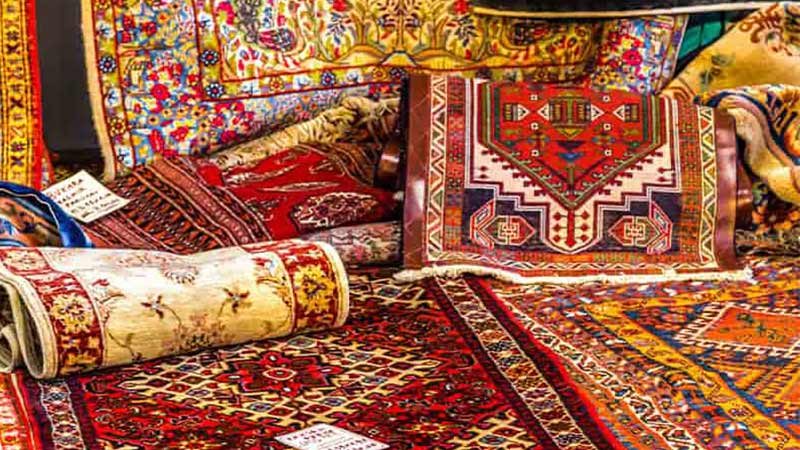
Historical Evidence of Carpet Use
It’s important to remember that materials used in carpets, like wool, silk, cotton, etc., tend to decay over time, making it difficult for archaeologists and historians to establish the exact age of carpets. However, historical evidence indicates the presence of magnificent carpets in the Achaemenid courts. For example, Alexander the Great was reportedly amazed and delighted by the splendid Persian Carpets he saw in Pasargadae. During the Seljuk and Ilkhanate periods, carpet weaving was also a valuable and profitable art; it’s said that mosques of that era were adorned with valuable Persian Carpets. Many historical quotes testify to the antiquity and authenticity of this historical art. For instance, Xenophon mentions:
“In the Achaemenid courts, carpets were spread out that needed to be replaced frequently due to decay, and other carpets would take their place.”
European archaeologist Count Caroche wrote about this as well:
“In the ancient history of Iran, we come across a period when Persepolis was set on fire by Alexander, and the luxurious and splendid Achaemenid carpets burned in the fire.”
Rudenko also wrote about this:
“Alexander laid out delicate but richly designed carpets in front of his royal throne.”
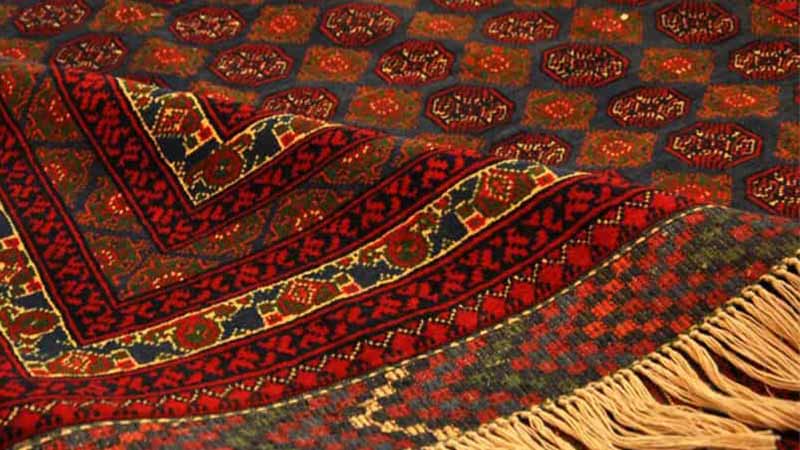
Pazyryk Carpet
The oldest carpet in the world is the Pazyryk Carpet, discovered in 1326-1328 Solar Calendar by a Russian archaeologist in the frozen grave of a Scythian ruler. Named after the “Pazyryk Valley” in Russia where it was found, the carpet was accompanied by other ancient artifacts. This woolen, square carpet measures 1.98 meters on each side.
The Pazyryk Carpet features a floral border and images of horsemen, grazing deer, and mythical animals with eagle heads and lion bodies. Sergei Rudenko, the discoverer of this carpet, noticed a strong resemblance between the carpet’s motifs and the bas-reliefs of Persepolis. Although most researchers believe this carpet belongs to the Parthian or Median period, there are different theories about its actual age. The Pazyryk Carpet is currently kept in the Hermitage Museum in Saint Petersburg.
Authentic Persian Carpets
Gabbeh: A Choice for Natural Fiber Fans
Gabbeh is a type of Iranian handwoven carpet, usually thicker and coarser than other Persian Carpets. One distinct feature of Gabbeh is the use of natural wool yarn and natural plant-based dyes.
Kilim: A Choice for Connoisseurs
Kilim is a type of handwoven mat without pile, often made of natural wool. The weaving of these mats usually involves geometric patterns like diamonds, hexagons, squares, and triangles, sometimes incorporating natural and animal figures. The steps of weaving a Kilim include warp drawing, securing the warp beams, stabilizing the warps, and chain weaving. Kilims can be categorized into plain weave, relief pattern, and Verneh based on their weaving styles.
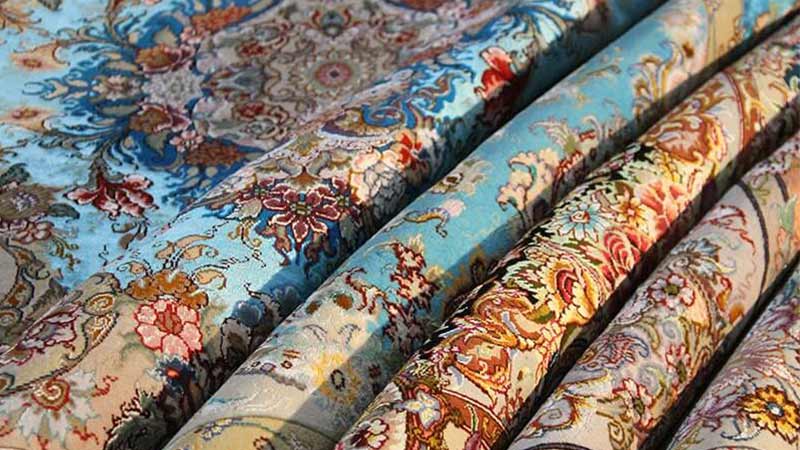
Jajim: A Genuine Handwoven Fabric
Jajim refers to flat woven textiles that are long and narrow. Jajim is thinner and more delicate than Kilim. Different regions weave Jajims and give them local names. For example, in Ilam, Jajim is called “Joul.”
Carpets from Northern Iran: Carpets with Unique Designs
Regions like Rudbar, Kelardasht, and Bandar Turkmen are known for weaving carpets with triangular patterns. Dark red is a predominant color in most Turkmen carpets.
Tabriz Carpets: Among the Best Persian Carpets
The history of carpet weaving in Tabriz dates back to the Safavid era, and Tabriz carpets are among the finest in Iran and These carpets are beautifully displayed in the grand bazaar of Tabriz. The primary materials for weaving Tabriz carpets are usually silk or wool. Characteristics of Tabriz carpets include:
- They are finely woven.
- They are often woven with high knot counts.
- The pile of Tabriz carpets is typically short.
- These carpets are visually deep, a feature owed to the use of light and shadow techniques in weaving.
Kashan Carpets
The pile height of Kashan woven carpets is medium, and these carpets are generally finely woven and delicate. Previously, the color palette of Kashan carpets was made of bright colors with high contrast, but today, softer colors are used in weaving to cater to customer tastes and market demands. Common designs in Kashan rugs and carpets are mainly a combination of decorative patterns. The color range in Kashan carpets and rugs is limited to ivory white, grey, brown, and tobacco.
Qom Carpets: A Weave of Delicacy
The carpet weaving industry initially thrived among the Iranian nomads and villagers of Qom but gradually gained importance in trade and spread to other areas of the province. Qom carpets initially entered the market with relatively coarse threads but gradually, Qom artists, with their ingenuity and taste, began to weave very fine and orderly carpets. The finesse and orderliness of handwoven Qom carpets are such that one might doubt if they are machine-made.
Cities like Qom, Tabriz, and Kashan have the most popular handwoven Persian Carpets. Common designs in Qom rugs include Shah Abbasi medallion, Muharramat, Mihrab, and hunting scenes. Initially, the colors used in Qom rugs were limited to four to six shades, but over time, the range of colors used expanded, and currently, more than 40 distinct and varied colors are used in weaving carpets in this region. The most popular handwoven Persian Carpets are from the cities of Tabriz, Kashan, and Qom; however, your personal criteria also determine which region’s carpet is better for you, considering the features of the carpets and your taste.
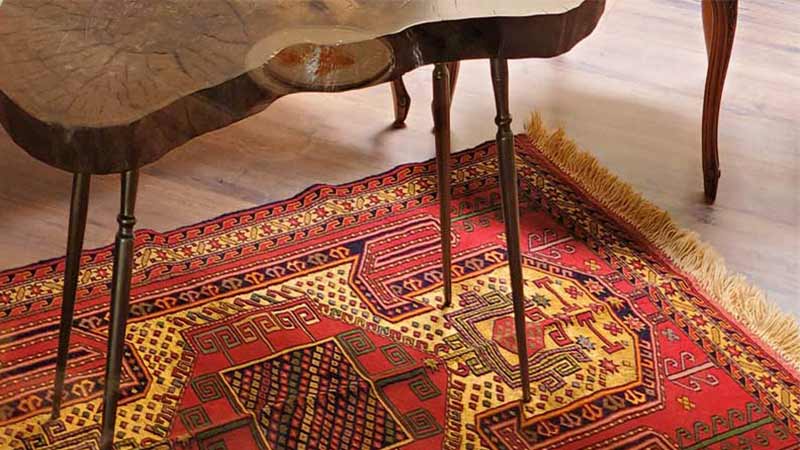
Patterns of Persian Carpets
To offer a complete classification of Iranian carpet patterns, we can refer to the following categorization:
- Ancient and Islamic architectural designs
- Shah Abbasi designs
- Arabesque (Eslimi) designs
- Adapted designs
- Bordered designs
- Scattered (Afshan) designs
- Boteh Jegheh designs
- Turkmen designs
- Tree designs
- Gol Farang (foreign flower) designs
- Hunting scene designs
- Brick (Kheshti) designs
- Fish designs
- Pot (Gol-Dani) designs
- Geometric designs
- Muharramat designs
- Mihrab designs
- Fusion designs
- Tribal (Ashayeri) designs
Symbols of Persian Carpets
Understanding the symbols and emblems of Persian Carpets can provide a clearer understanding of this art. Below, we introduce some of the most repeated symbols in Persian Carpets.
- The single flower design in the shape of an octagon close to an oval represents the courage and resilience of those who live in the mountains. This symbol originally means mountain goat.
- The diamond symbol, in the East, represents religion and is depicted with rays stretched outwards.
- The Qachaq (bandit) symbol, meaning ram, is woven in two forms: the full body and the horns of a ram. These three symbols are commonly depicted in Turkmen carpets and are of great importance to Turkmen weavers.
- The bird symbol is one of the most repeated and popular among weavers and audiences. In addition to its significant place in Iranian art, birds are also highly regarded in literature. The depiction of the Simurgh in Persian Carpets, which symbolizes connection, gives a special look and meaning to the carpets. However, it should not be confused with the “bird and tree” symbol (two birds sitting on a tree branch), which is completely different. In this symbol, the tree is interpreted as life. In this depiction, birds are often facing each other, and in some cases, they are back to back.
- The “bird and tree” pattern refers to life or the sacred tree of the Sassanians.
- The Boloordi tree pattern, unique to the city of Shiraz but recently gaining attention in other parts of Iran, represents steadfastness, resilience, shade, and humility. The village of Boloordi is located on the northwestern slopes of the mountains near Shiraz.
The swastika symbol is one of the oldest Iranian designs, also known as the Aryan Sun. In Iran, it symbolizes happiness and good fortune. This symbol, before the Achaemenid era, had curved and bent arms, but gradually its lines and geometric shapes changed. Some experts consider the Aryan Sun symbol as the origin and model for many other designs and symbols.
The best Persian Carpets
The best Persian Carpets vary greatly depending on your personal preferences in choosing carpets. Iranians have long displayed their skill, artistry, taste, and genius in carpet weaving. In this context, the carpet weaving art of some regions is more renowned than others. It is inferred from texts and documents that villagers and nomads have been pioneers in carpet weaving in Iran. Generally, carpets from Tabriz, Qom, Kashan, and the northern regions of Iran are considered the most popular. When choosing and buying a carpet, consider the following:
Material Quality
The quality of the material is a key factor in selecting a carpet. If you’re buying machine-made carpets, pay attention to the smell of the carpet, the clarity of the colors, and how sticky it feels. A good quality acrylic carpet does not smell of plastics, feels smooth to the touch, and has clear colors and patterns.
Knot Density
Knot density is an important factor in choosing a carpet. The more densely knotted a carpet is, the more durable and compact its texture.
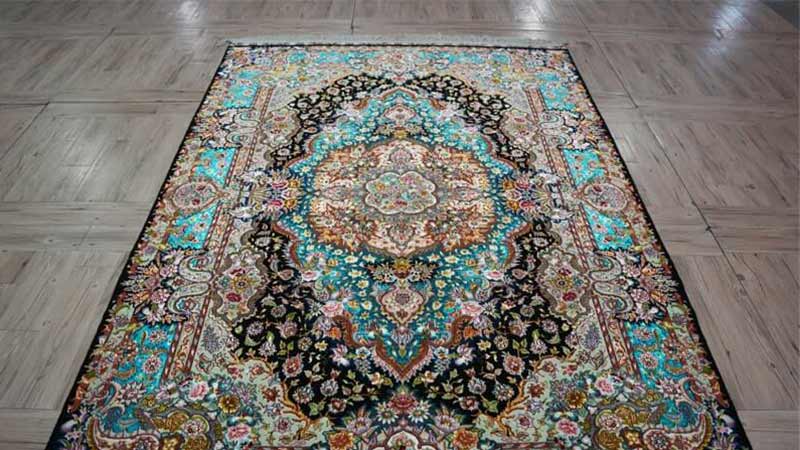
Serial Number, Warranty, and Guarantee
Especially for machine-made carpets, pay attention to the serial number, valid warranty, and guarantee to avoid low-quality imitations.
Size of the Carpet
Pay attention to the size of hand-woven carpets. A few centimeters difference in size is natural, but more significant discrepancies can be a flaw.
Carpet Pile
The pile of the carpet is an important factor in its quality. Check the softness and coarseness of the pile; softer piles are harder to clean and less durable.
Back of the Carpet
Don’t just look at the front of the carpet! Check the back for signs of wear and tear, such as mending or rotting.
Price of Persian Carpets
The price of carpets varies based on several factors, including whether they are hand-woven or machine-made, the materials used (wool, silk, cotton), and the percentage of acrylic fibers used. Variations in color, pattern defects, and irregularities can affect the price.
Determining the Age of a Carpet
Carpets woven within the last five years are considered “new,” while those woven 5 to 25 years ago are “old.” Carpets 25 to 60 years old are termed “semi-antique,” and those 60 to 250 years old are “antique.”
Proper Carpet Care
To prevent premature wear and ensure durability:
- Avoid excessive heat.
- Don’t expose carpets to direct sunlight.
- Rotate carpets regularly to avoid uneven wear.
- Vacuum in the direction of the pile.
- Roll, don’t fold, carpets when moving them.
Frequently Asked Questions
When did carpet use become popular in Iranian culture?
Historical evidence shows that carpet use has been common since the Achaemenid period.
What is the name of the oldest carpet in the world?
The oldest carpet in the world is the Pazyryk carpet, discovered by a Russian archaeologist in the frozen tomb of a Scythian ruler between 1949 and 1951.
In which cities are the most popular Iranian hand-woven carpets produced?
The cities of Qom, Tabriz, and Kashan produce the most popular Iranian hand-woven carpets.
What factors should be considered when buying a carpet?
Consider the material, knot density, serial number, warranty, carpet size, pile, and the back of the carpet.



